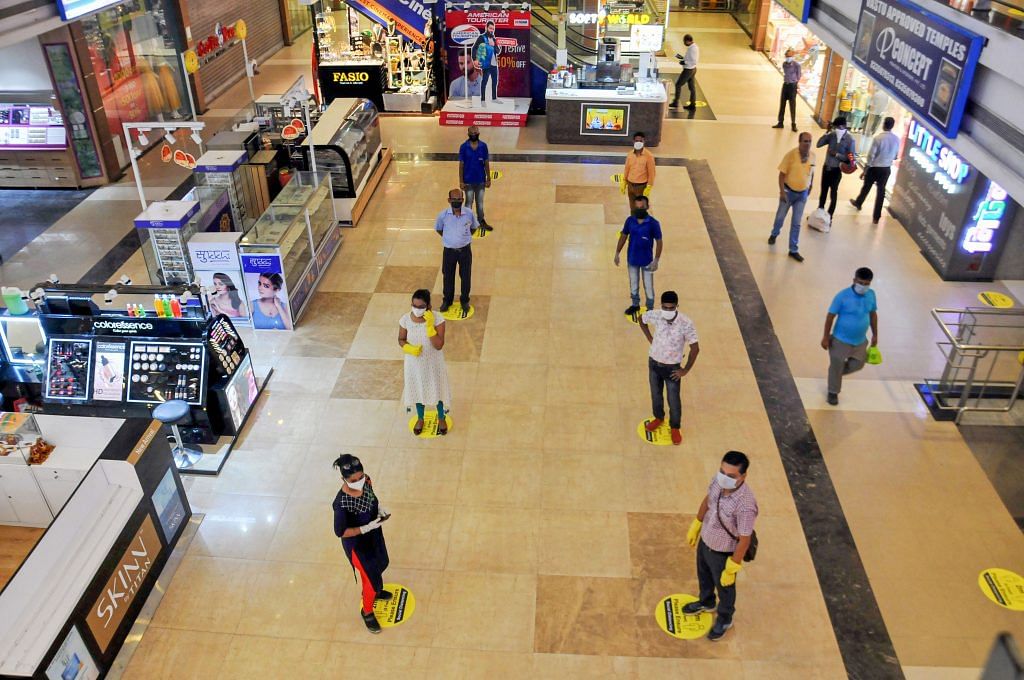Bengaluru: The primary mode of Covid-19 transmission continues to remain large droplets even as aerosol and fomite transmission cannot be ruled out, the World Health Organization (WHO) said Thursday in its new scientific brief summarising everything known about the virus’ transmission.
The WHO issued the brief after over 200 experts wrote an open letter to the agency to revise its airborne transmission guidelines.
In the 10-page brief that explored all possible modes of transmission for SARS-CoV-2, the global health agency admitted that aerosol transmission cannot be ruled out, especially in crowded and poorly ventilated areas.
Aerosols are defined to be less than 5 micrometers or five-thousandth of a millimetre in size. While droplets can also be airborne, airborne transmission refers primarily to aerosol transmission in the context of Covid.
Aerosols can stay in the air for several hours and spread widely, especially in unventilated indoor spaces.
Scientists suspect that SARS-CoV-2 might be transmitted via aerosols, which are generated from just speech or exhalation of air. In their letter, the experts had described airborne or aerosol transmission as the cause behind some super-spreader events.
Also read: Why Delhi’s Covid hospitals are struggling to fill ‘lucrative’ senior resident doctor posts
‘Other modes of transmission can also explain some events’
The latest WHO document acknowledged experiments that demonstrate the release of aerosols during actions like talking or singing, but said that aerosol transmission has not been established or demonstrated with the SARS-CoV-2 virus.
It added that even though the virus was detected in the air after aerosol generating procedures in hospitals, it was found to not be viable.
On Tuesday, Benedetta Allegranzi, WHO’s technical lead for infection prevention and control, had addressed the concerns raised in the open letter, saying, “There is some evidence emerging, but it is not definitive”. “The possibility of airborne transmission in public settings, especially in very specific conditions — crowded, closed, poorly ventilated settings — cannot be ruled out,” she had said.
In the new brief, the agency said there have been some reports that seem to suggest aerosol transmission had spread the disease, but those can be explained by other modes of transmission of the virus, including “during choir practice, in restaurant or in fitness classes”.
There have been instances of super-spreader events in both a choir practice in Washington as well as in restaurants in China that have been linked to aerosol transmission.
“In these events, short-range aerosol transmission, particularly in specific indoor locations, such as crowded and inadequately ventilated spaces, over a prolonged period of time with infected persons cannot be ruled out. However, the detailed investigations of these clusters suggest that droplet and fomite transmission could also explain human-to-human transmission within these clusters,” said the WHO.
Fomite transmission is when a healthy person contracts the virus from a contaminated surface.
The agency also explained that not taking adequate distancing or masking measures would have further facilitated such a spread.
In their letter, the scientists had compared the evidence the scientific community has for aerosol transmission with that for fomite transmission, alleging that WHO stresses more on fomites despite not having evidence that it’s a prime mode of transmission. They had said that there is “admittedly incomplete” evidence for microdroplet transmission, just as there is for both large droplet and fomite transmission.
The WHO brief acknowledged the lack of evidence for fomite transmission, stating that despite consistent evidence of the virus settling on surfaces, there has been no evidence of the virus spreading between individuals through this method, as those who came in contact with infected surfaces likely came in contact with infected individuals as well.
Recommendations
To prevent transmission, WHO continued to recommend testing, tracing, and isolating. It said asymptomatic people can infect others, and those displaying symptoms infect others primarily through droplets and close contact.
The agency also said that further research is urgently needed to investigate aerosol transmission understanding instances attributed to it.
Also read: Plasma therapy — 11 trials underway, many Covid ‘cure’ stories but some doubts linger
